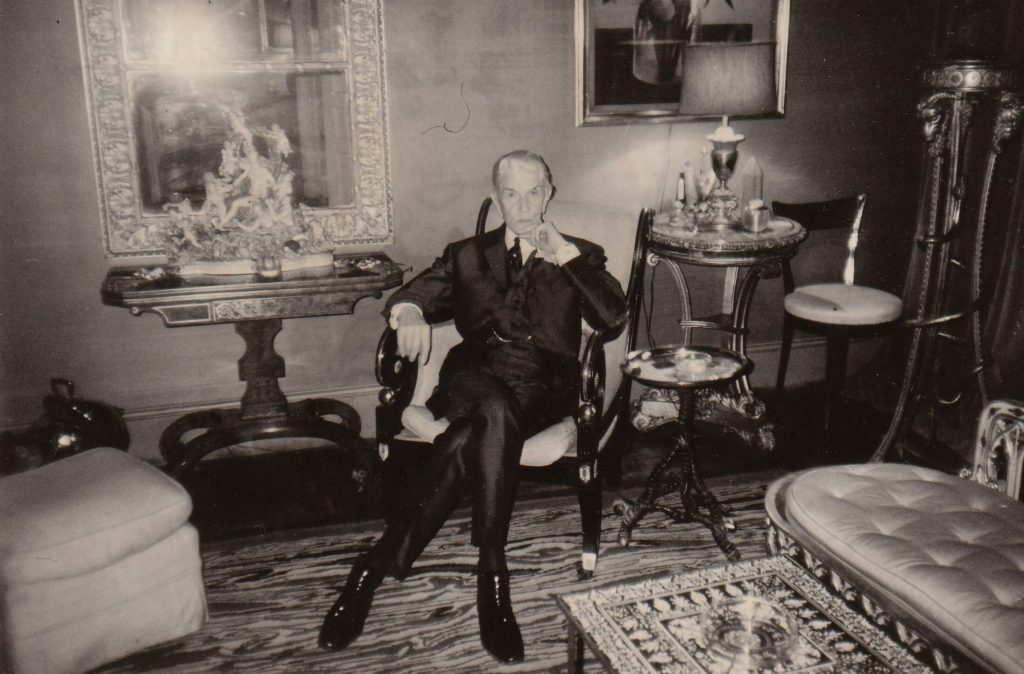Much has been made of the dandy’s clothes. But how does a creature so particular in its aesthetic needs dwell ?
The supreme message of a harmoniously arranged house, is that of being the ideal reflection of its master. Of course plenty of narcissism enters from this viewpoint, it is the narcissism of those who don’t search for their image in a mirror, but certainly in objects and in the arrangements of furniture which reflect their personality.
Mario Praz
The dandy excels in the minor arts: dressing, interior design and entertaining. The naivety bordering on stupidity necessary for someone to label himself an artist he regards with suspicion. His art is is the rendering of his elusive self. Enormous attention has been given to the realm of clothing in the context of dandyism. But clothing is merely the first though arguably most vital layer covering and revealing the self simultaneously. If shelter and modesty are necessities it is the perfection of the necessary that concerns the dandy. The second layer of necessity is housing and in this the interior precedes the exterior. This progress from the innermost layer to the outermost, from clothing to interiors to architecture, starting with the construction of a three-dimensional shell, covering the individual according to his needs – like a bespoke suit – corresponds closely to the architectural ideas of the fin de siècle dandy, architect and godfather of the modern movement: Adolf Loos. The interior architecture of Loos’s buildings was indeed made to measure: the rooms had differing heights, the ceilings only as high as the room’s usage dictated. All cupboards and wardrobes were fitted: not surprisingly Loos had cut his teeth as an interior architect with the design of men’s outfitters. The functional beauty of the premises at Knize, the most prestigious of Viennese tailors stands as a testament to Loos’s ideas regarding interior space to this day. Loos’s painstaking use of space has its equivalent in the economical architecture of travel: a sleeper train compartment or a ship’s cabin, their interiors fitted so precisely to make full use of minimal space. In Enemies of Promise (1937), the essayist Cyril Connolly identifies this contemporary type of dandy: ‘At the moment dandyism in its most extreme form, perfectionism, is on the increase, for perfectionists, like the hermits of the Thebaid, take refuge from the world in private salvation. I have known many perfectionists, all of whom are remarkable for the intense stripping process which they carry out. Their lives are balloons from which more and more ballast has to be cast; they never have more than one suitcase, wear no pyjamas or underclothes, travel constantly and are the mystics of our time, pressés de trouver le lieu et la formule.’
Economy to the modernist dandy is an inevitable concomitant of the eternal search for perfection. Psychologically, he is driven by a kind of claustrophilia, as well as by a fetishistic attachment to the ‘perfect fit’: the bedroom is a cosy cabin, the house a direct extension of the inhabitants’ needs and individuality. The dandy desires to live in his wardrobe, both literally and metaphorically. The architect Herbert Schleicher describes attending some lectures Loos gave at the Technologische Gewerbesmuseum (Museum of Technology and Trade), in which he spoke on the organisation of flats and specifically the storage of clothing: ‘The first strong impression I got was of the description of desks and wardrobes equipped with so-called English drawers [Englischer Zug], which was an entirely new term to me. The dandy’s perfect microcosm will be full of sliding doors, brass hinges and devices that snap into place: things that are balanced and indeed fitted. Parallels with the tailored suit are never far away, a fact that was not lost on Loos’s contemporaries. Ludwig Hevesi, then spokesman for the Secession, compared the geometrical elegance of Loos’s architecture to his suits, remarking of his interior designs for Goldman&Salatsch (another tailor formerly situated in Loos’s infamous Haus am Michaelerplatz today known simply as the Loos-Haus): ‘Well, Loos! That’s just like him. It really is just like him. He dresses like that too. And his tailor’s shop and flat on the Graben are furnished like that too. Folding, snappy, so formally and mechanically correct.’
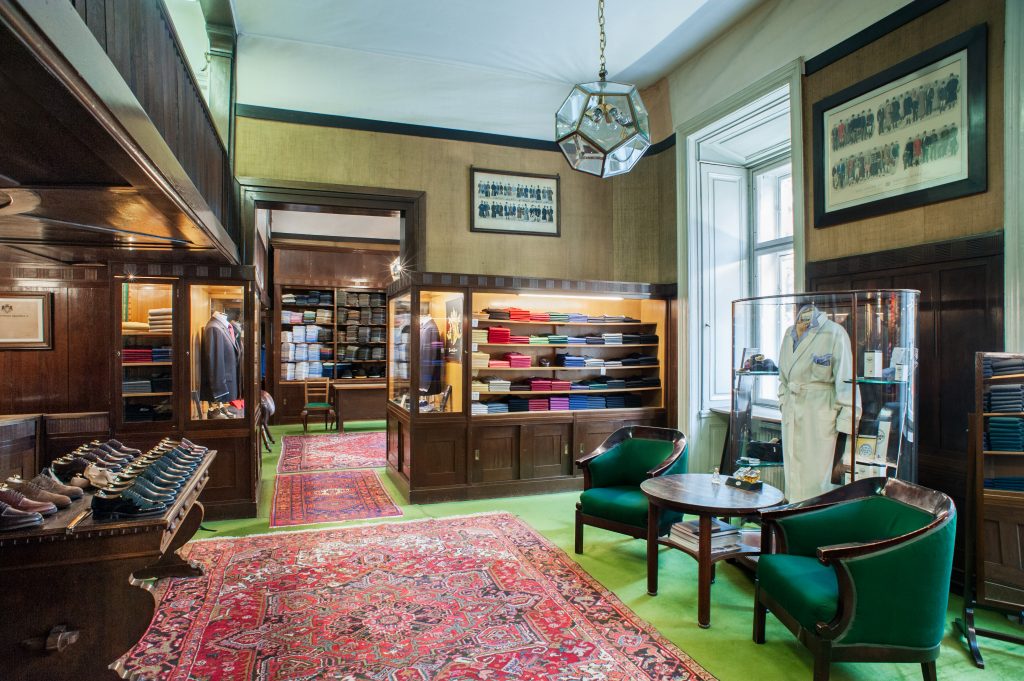
Jansen, one of the four hommes Melvillien in the director’s eponymous Cercle Rouge (1970), almost literally lives in a Louis Vuitton travelling trunk. A more precise architectural metaphor for the dandy’s reductive yet complex identity could not be imagined. Jean-Pierre Melville’s filmic masterpieces are largely set in interiors as befits the psychological make-up of his high-cultural gangsters. Interior space signifies the hermeticism of the dandy’s artificial world: he is ill at ease in nature and needs to surround himself with the cultural artefacts that are his raison d’être. In a letter to a friend the German writer Gottfried Benn echoes dandyism’s mistrust of nature: ‘Nature is empty and desolate, only the petit-bourgeois can find meaning in it… Flee from nature, she muddles your thoughts and notoriously cramps your style!’ Melville’s typical mise-en-scène is an exercise in active claustrophilia as well as a Wunderkammer of his aesthetic phantoms. The bourgeois tradition of privacy in domestic interiors has its origins in the aristocratic preferences of the eighteenth century. Whereas in seventeenth-century residences size was an essential signifier of status, and rooms were as large and high as possible, the eighteenth century was an age of down-sizing. Smaller spaces were not only more intimate, but were also easier to light, so gaining in appeal after dark. Thus the eighteenth century gave rise to the atmospheric staging of rooms through light, a nocturnal pursuit that the twentieth century continued in the popular medium of the cinema, and nowhere more so than in film noir. Melville’s own apartment within his studio on rue Jenner was a distillation of the atmosphere of the films he loved: intimate rooms kept permanently dark by drawn Venetian blinds, sharp pools of light beneath cylindrical lampshades, and a few carefully selected pieces of neo-classical furniture. At the same time the interiors in the classier French films of the trentes glorieuses also represent the haut goût of the times, say that of the two most refined tastemakers in interior design: Emilio Terry and George Geffroy.
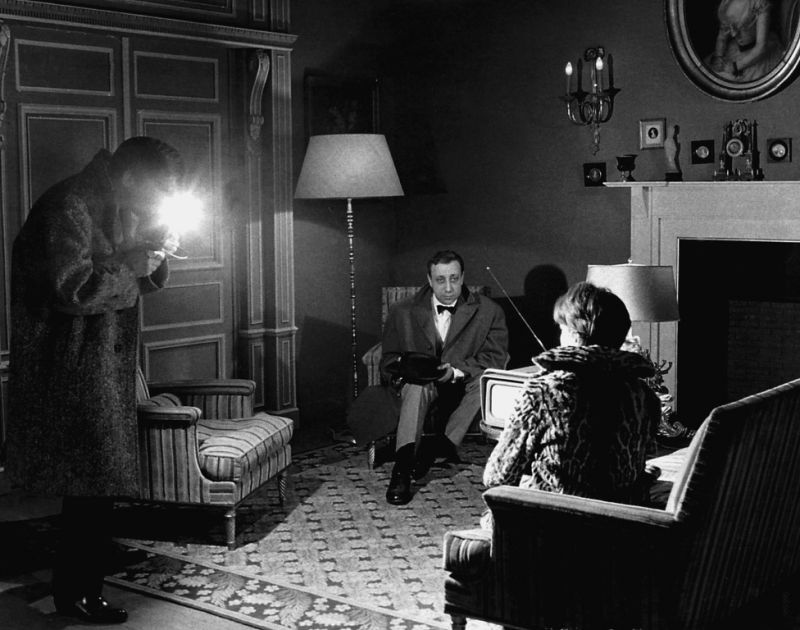
Both these arbiters of interior decoration are discussed in La Brocante (1975), Philippe Jullian’s highly amusing autobiography. If clothes were the Duke of Windsor’s tools to tell his life-story in A Family Album (1960), pieces of furniture are certainly Jullian’s. A more sophisticated writer than the Duke, Jullian regales us with plenty of metaphorical insight into a life entirely lived in the brocante, a space somewhere between an antique dealer’s and a junk shop. Author inter alia of books on the Symbolists (translated as Dreamers of Decadence, 1973), Gabriele d’Annunzio and Robert de Montesqiou, Jullian represents and clearly adores the decadent tradition within dandyism. Montesqiuou was of course the real life model for Joris-Karl Huysmans’s Floressant des Esseintes protagonist of the novel on which according to the great historian of interior decoration, Mario Praz, the decadent movement pivoted: À Rebours (1884). Nowhere in fiction do we find a more precise and simultaneously heightened description of a dandy interior. After a long process of elimination des Esseintes finally settles on orange as the ideal wall colour: ‘Thus, there could be no question about Des Esseintes’ choice, but unquestionable difficulties still arose. If red and yellow are heightened by light, the same does not always hold true of their compound, orange, which often seems to ignite and turns to nasturtium, to a flaming red. He studied all their nuances by candlelight, discovering a shade which, it seemed to him, would not lose its dominant tone, but would stand every test required of it. These preliminaries completed, he sought to refrain from using, for his study at least, oriental stuffs and rugs which have become cheapened and ordinary, now that rich merchants can easily pick them up at auctions and shops. He finally decided to bind his walls, like books, with coarse-grained morocco polished by strong steel plates under a powerful press. When the wainscoting was finished, he had the moulding and high plinths painted in indigo, a lacquered indigo like that which coachmakers employ for carriage panels. The ceiling, slightly rounded, was also lined with morocco. In the centre was a wide opening resembling an immense bull’s eye encased in orange skin—a circle of the firmament worked out on a background of king blue silk on which were woven silver seraphim with out-stretched wings…
The setting was complete. At night the room subsided into a restful, soothing harmony. The wainscoting preserved its blue which seemed sustained and warmed by the orange. And the orange remained pure, strengthened and fanned as it was by the insistent breath of the blues. Des Esseintes was not deeply concerned about the furniture itself. The only luxuries in the room were books and rare flowers. He limited himself to these things, intending later on to hang a few drawings or paintings on the panels which remained bare; to place shelves and book racks of ebony around the walls; to spread the pelts of wild beasts and the skins of blue fox on the floor; to install, near a massive fifteenth century counting-table, deep armchairs and an old chapel reading-desk of forged iron, one of those old lecterns on which the deacon formerly placed the antiphonary and which now supported one of the heavy folios of Du Cange’s Glossarium mediae et infimae latinitatis.‘
If furniture was a secondary consideration to des Esseintes it certainly wasn’t to Philippe Jullian. Apart from his autobiography he also wrote the biography of a piece of soft furnishing Mémoires d’une bergère (1959). Indeed Jullian was somebody who entertained meaningful relationships with objects a mixed blessing he ascribed to his homosexuality: ‘Objects are the children of gay people and certain commodes are loved in a way that few wedded individuals can flatter themselves that they are loved after thirty years of marriage. No porcelain is precious enough to adorn them. Their owner is envied as the owner of the winner of the Grand Prix in less delicate environments. Elsewhere, earthenware replaces the grandchildren – the dear blonde heads are called Pont-aux-Choux or Rouen – we dream of great marriages between the Pink Family and the Green Family. On the whole rather badly adapted to society, the homosexual is more susceptible to nostalgia. When his taste is good, it consists of many disgusts.’
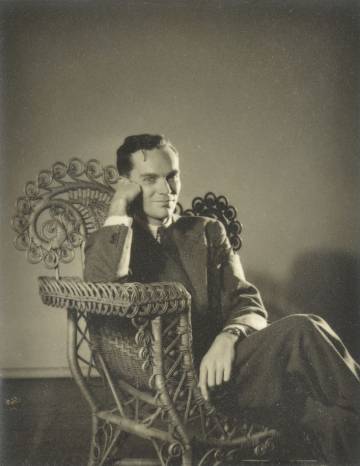
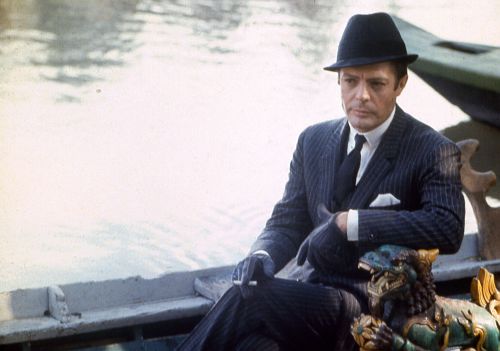
Jullian’s own desire to live in a mythical past, vastly exceeds the odd moment of wistful nostalgia. In his own words an enfant des grand-mères – an absent father meant that he traveled between grandparents in his native Bordeaux and Paris from infancy – a fact that early on made him associate safety with the past. Later in life he acquired a country house in Senlis, a Balzacian town which almost certainly was the real life model for Doncières in the Recherche – a choice that anchored him firmly in a history both real and fictional. It was also at his grandparents that he acquired a taste for antiques and learnt to discriminate in terms of taste. This precocious apprenticeship as an antiquary was not ever to lead him to become a dealer – he couldn’t bear to part with even the smallest knick-knack – but remained an all-consuming private passion all his life. Something of a melancholic – un esthète aux enfers – Jullian even described his desired death in terms of flea-market finds: ‘I am surprised that more people don’t kill themselves past their fiftieth birthday, when the shop doesn’t have many surprises in store, or finds that are too heavy for us to take care of, too fragile to be held in hands that will soon tremble’.
A loaded metaphor calling to mind another rêve bourgeois nearing its end. Days before his suicide in 1945, Pierre Drieu La Rochelle put down some thoughts on interior design in extremis: ‘I contemplated all the objects in my study with a deep sensual delight; for a few months I thought more and more of Baudelaire and Poe: I remembered what they had said about the beauty of certain interiors, which are arranged entirely according to an intellectual intuition. Chair, ink-well, sofa, vases, pipes, bowls, books, all this was – as though by a scent – pervaded by my feeling of renunciation, all this seemed to be as separate from the world as myself and ready to go away with me.’
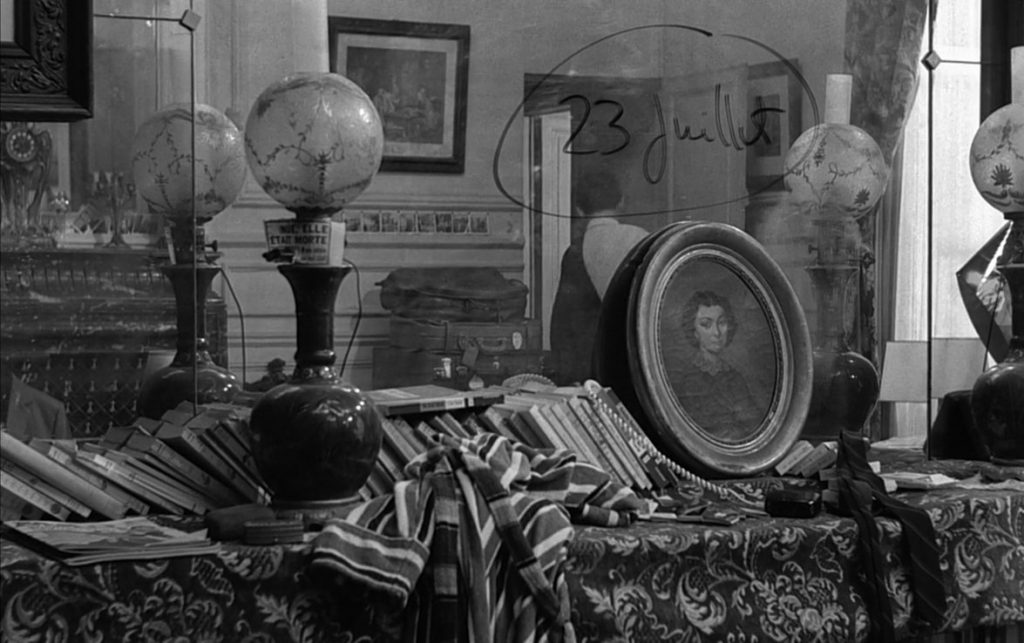
Also the author of the Romantic Agony, a thorough investigation of the gothick and necromantic aspects of the 19th century, Mario Praz was no stranger to the dark side – to his eternal chagrin he was even thought by his Italian compatriots to possess the evil eye. Yet his true passion lay not with the muddy historicism of the second half of the 1800s but the enlightened neo-classicism of the first. It is of course also the period which saw the inception of the dandy. So it was largely with neo-classical pieces that Praz furnished the interiors in which after a surfeit of disappointments in the real world he increasingly spend his time: first at the Roman Palazzo Ricci and later on a flat in Via Giuseppe Zanardelli, now a museum (Praz was the model for the Burt Lancaster character in Visconti’s Gruppo di Famigla in un Interno). A serious and highly respected scholar and anglophile he had no track with the aesthetic slovenliness he perceived amongst his academic peers: ‘In my vocabulary, this judgement: he doesn’t care for interiors, is a condemnation as severe, as definitive as would be, in the repertoire of a moralist, the discovery of an ethical deficiency in one of his colleagues. He who remains insensitive to a harmonious arrangement of beautiful furniture is to me what to Shakespeare was a man who has no music in him.’
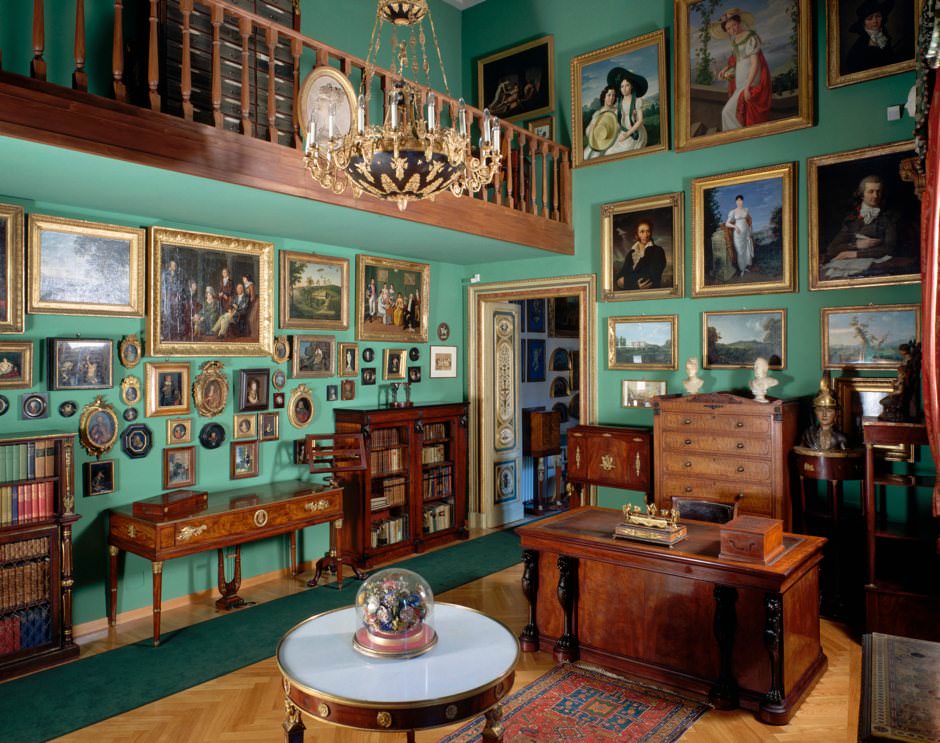
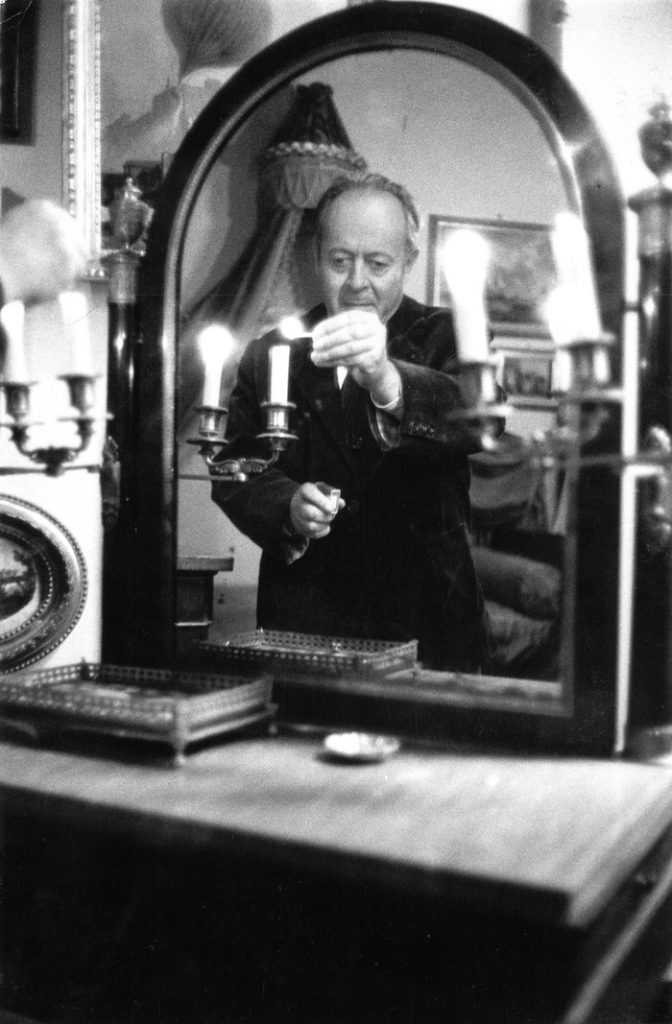
In La Casa della Vita Praz describes in minute detail every item of his own collection comprising not only of furniture but also countless bibelots and paintings of the conversation piece genre which Praz single-handedly reevaluated. Descriptions which lead him to ample digressions of the circumstances in which he found these objects forming in the end a comprehensive autobiography told through his possessions. A sensibility that ultimately relegates the ageing professor to a place amongst and equal to his collection: ‘I see myself as an image and an object, a collector’s item among collector’s items, already detached and distant, and like that Adam engraved in the marble slabs of the church of San Domenico in Siena, I looked at myself in a convex mirror and saw myself no more important than a pinch of dust.’
Sic transit gloria dandy.
Featured image: Bunny Roger chez lui même

